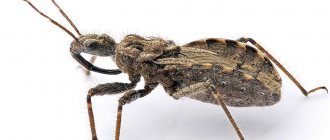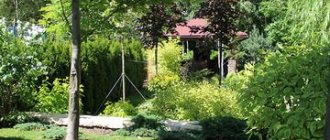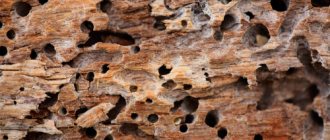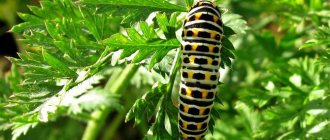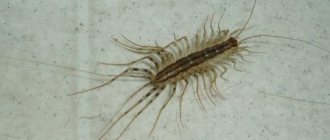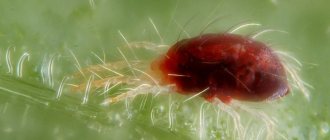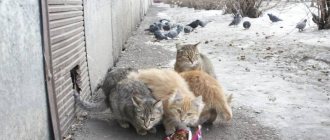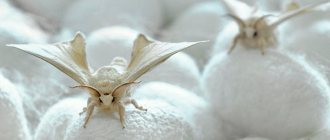A farmer can preserve and protect plant crops planted in a garden or vegetable garden not only by chemical, but also by organizational, economic, agrotechnical, mechanical and biological methods. By taking the above measures, you will be able to avoid damage and death of a healthy crop.
Measures to protect garden and vegetable crops are aimed at reducing the number of dangerous pests and pathogens, preventing their mass reproduction or increasing plant resistance to damage and diseases. A set of techniques aimed at destroying pests and pathogens or reducing damage from them is called a system of plant protection measures. It includes organizational and economic measures, agrotechnical, mechanical, biological and chemical control methods. All these methods are combined with each other, complementing each other.
Organizational and economic measures
The group of organizational and economic measures includes, first of all, the correct placement of trees on the site. It involves maintaining optimal distances between trees, determined by agricultural instructions. Tall varieties require a large feeding area (usually 4x5 m), while semi-dwarf and dwarf varieties require less. Condensation of plants is undesirable: by closing their crowns, the trees interfere with each other, spraying the trees becomes difficult, and lighting conditions worsen. Dense plantings are also less likely to be blown by the wind.
Varieties of fruit crops of different ripening periods are sprayed an unequal number of times: summer varieties less, winter varieties more. Often different means are used to process them. Therefore, it is advisable to place trees with the same fruit ripening period in groups. This will protect summer varieties, especially during the period of ripening and harvesting, from contact with pesticides when spraying winter varieties.
Planting material for planting and updating a garden and berry garden, seedlings and seeds of vegetable and flower crops must be healthy and not infected with pests and diseases. Aphids, leaf rollers, scale insects, phylloxera, and some pathogens can be brought into the garden with planting material. Therefore, it is better to take planting material not from private individuals, but from fruit nurseries.
Sometimes, in order to more fully utilize the land, berry bushes, strawberries, and vegetable crops are placed between the trees. Such placement can be justified only in the first years after planting the garden, when there is still no need to spray the trees with pesticides. When sprayed, pesticides fall on berries, strawberries, and vegetable crops growing under trees and make them of little use or unsuitable for use as food.
Bedbugs
Bed bug Gminatus australis with beetle prey
The predatory bug belongs to the class of weevils. Its different species have specific food sources. For some it is the juice of some plant, for others it is insects. The gardener is primarily interested in the latter, which, among other things, destroy aphids. These include soft-bodied and false bugs, among which some species feed primarily on spider mites.
Flower bugs are small predatory insects 3-4 mm long. At one time, the female lays up to 8 eggs, mainly along the edges of the leaves. During the year, bedbugs hatch 2 generations, and in areas with a warm climate even 3. Predatory bugs overwinter as adults. Larger species of the flower bug also feed on gall midge larvae.
Dispersal in the garden: no special requirements or recommendations, except for the exclusion of the use of chemical plant protection products.
Agrotechnical measures
Agrotechnical measures, when carried out in a timely and high-quality manner, make it possible to grow strong, healthy plants that have increased resistance to damage by pests and diseases. They significantly reduce the number of pests and, accordingly, reduce damage from them. It is advisable to give preference to varieties that are resistant to pests and diseases if their yield and taste meet the requirements of the gardener. Loosening the soil, killing weeds, and moderate application of fertilizers prevent the proliferation of many pests and pathogens.
Autumn digging of the soil with careful embedding of fallen leaves and other plant debris is an effective method of combating apple scab, cabbage moths, leaf spots, etc. Pruning and burning dry and damaged branches in the garden helps reduce the number of corrosive woody beetles, gooseberry aphids, apple glass, and raspberry flies and others. Many pests and pathogens reproduce on weeds and spread from them to crop plants.
Regular destruction of weeds reduces the number of cruciferous flea beetles, cabbage moths, white rot of garden crops and many other harmful organisms. Timely harvesting of apple fruits reduces their losses from codling moth and scab. Sowing flower plants and nectar plants in the area attracts beneficial insects. Feeding flowers with nectar increases their fertility and enhances beneficial activity.
Colorado beetle
It feeds on the leaves of plants of the nightshade family. They cause the greatest damage to potato and eggplant plantings; less often they parasitize peppers and tomatoes. It overwinters in the ground; even in severe frosts, only a small part of the population dies. With the arrival of warmth, females lay clutches of eggs (up to 40 eggs each) on the back of the leaves. The development time of larvae is about 21 days. Both the beetles themselves and their larvae are extremely voracious and are capable of completely destroying entire plantations of their favorite crops in a short time, unless enhanced preventative and control measures are taken.
Mechanical measures
The mechanical method of control includes measures aimed at the physical extermination of harmful insects, and sometimes pathogens, and at creating obstacles for the penetration of pests to the fruit tree or its crown. This group of methods includes, for example, removing from the branches and burning the winter nests of lacewings and hawthorns, hanging trapping belts on trunks, manually collecting and destroying the Colorado potato beetle, cabbage whitethorn caterpillars, etc.
Spraying the garden
Autumn sprinkling of shrubs and trees is carried out using three main liquids:
- urea,
- copper sulfate,
- iron sulfate.
Remember the protection technique:
- When working in the garden, wear a protective suit, gloves, and a respirator mask.
- Buy a suitable garden sprayer based on the size of the area being treated.
A 5% urea solution will rid the plantings of scab. The trunk and branches of the plant, as well as the soil around it, are subject to treatment against fungal disease. However, do not forget that urea contains nitrogen. This component initiates vegetation processes in trees.
To avoid exposing the plant to frostbite, spray the plantings with urea as close to frost as possible.
Finishing with a solution of iron sulfate (5–7%) will save the garden from moss and lichen, in which insects prefer to lay eggs. In addition, the mixture feeds the bark with iron, which helps in oxidative processes and prepares the plant for wintering.
Stone and pome crops, grapes, currants and gooseberries will be protected from many fungal diseases by a solution of copper sulfate. For greater effectiveness, lime is added to it and Bordeaux mixture is obtained.
Sprinkling trees with Bordeaux mixture is just right in the fall. This composition leaves burns on the leaves, for this reason its use in spring is dangerous. And in the fall, increase the dose of the solution without fear to 3%. Treatment with such a substance is the final stage in the autumn treatment of the site from diseases and pests.
How to spray plants
At this time, gardening shops sell a wide range of specialized formulations (often combined with fungicides and insecticides) for autumn spraying of garden plots. But we will discuss the most popular means.
- Until mid-October, spraying with urea is carried out. In autumn, this is a good medicine to combat fungal diseases, as well as scabs and spots. In addition, urea perfectly burns insect eggs and harms pupae. But there is no need to use urea at the end of the autumn period (closer to winter), since this composition feeds the plant with nitrogen. Urea is very often used as a nitrogen supplement. If you spray the garden with it for the winter, vegetation processes are activated in the plantings. The garden will not have time to prepare for sleep before the cold weather begins and, most likely, will die. For this reason, treating trees with urea in the fall is allowed, but only until the end of October. A month before the onset of frost, there is no need to sprinkle the garden with urea.
- To combat scab, powdery mildew and putrefactive diseases, other fungicides should be used. For example, treating trees with copper sulfate in the fall shows an excellent effect. This product can be used at any time of the year.
- If you add slaked lime to copper sulfate in a 1:1 ratio, you get the so-called Bordeaux mixture - a good composition for parallel combat against diseases and insects. Treating trees with Bordeaux mixture is the most famous type of spraying today. The product has a gentle bluish tone, so if your plantings are wrapped in a film of heavenly color, there is no need to worry. Over time, the color will be removed, but there will be no hostile insects or harmful microbes in the garden.
Sometimes trees are treated with iron sulfate in areas, mainly in apple orchards. This fungicide works similarly to copper sulfate, only in addition it feeds the vegetation with iron. This is an extremely important trace element for the Apple tribe. It takes an active part in many oxidative processes in apple trees, plums, cherries, and peaches.
After carrying out all the autumn activities (pruning, treating trees with fungicides, whitewashing, placing insulation and protective equipment), do not forget to clean the planting area. You do not process waste in the form of fallen leaves and trimmed branches, but insect pests can easily live in them and pathogens can breed. For this reason, all garbage must be collected and burned.
Biological control method
The biological method of controlling pests and plant pathogens is based on the use of their natural enemies - predatory and parasitic insects, mites, and insectivorous birds. Viruses, bacteria, and fungi are also used, often causing mass death of pests. By the way, parasites are considered to be animals that live on the body or inside other animal “hosts”, feeding on their juices or tissues. Parasites lead their “host” to death when they complete their development. The predator feeds on the prey for a short time, killing it immediately. Among the predators in gardens and vegetable gardens, ladybugs, lacewings, ground beetles, tachina flies, spiders, and predatory mites are often found, and among parasites - trichogramma, aphelinus, eupteromalus and other hymenoptera.
Beneficial organisms are used to control pests in a variety of ways. For example, Trichogramma is bred in laboratories and then released into gardens and vegetable gardens in order to combat the codling moth and cabbage moth. The predatory mite Phytoseiulus is bred and released into greenhouses to combat spider mites on cucumbers. In a garden plot, it is possible to attract parasites and predators and protect them by sowing phacelia, mustard, dill and other nectar plants. A reasonable reduction in the volume and timing of the use of pesticides will help preserve beneficial insects and mites. A number of bacterial and fungal preparations for pest control are produced by industry (lepidocide, bitoxibacillin). In order to attract insectivorous birds (tits, flycatchers, starlings) to the gardens, birdhouses and other nest boxes are hung in the gardens.
Some types of wasps
The first type: for all their clumsiness, wasp larvae are insectivores, although they do not hunt on their own, but feed only on those insects that adults bring to them. Adult wasps of these species feed on the nectar of flowers, sweet juices of berries and fruits, but for the younger generation they catch insects, chew them and feed them in the form of a mushy mass.
Social wasps feed the brood:
- paper;
- European and Asian hornets;
- Polybiine wasps in the USA.
An ichneumon wasp has caught a caterpillar to lay its eggs in.
The second type: in most solitary wasps, the female prepares a small nest for the larvae in the form of a hole in the ground or a small paper shelter attached to a vertical surface. The female brings an insect paralyzed, but not killed by poison, into this chamber and lays an egg on it. The wasp larva hatched from the egg slowly eats the insect, and begins to do so from those organs, the loss of which does not lead to the immediate death of the victim.
In some of these wasps, the female makes a sacrifice once, lays an egg and clogs the hole. In others, the adult may visit the nest from time to time and bring additional insects to it.
Settling in the garden: place a Fabre hive in the garden, etc. (see information below)
Preparation for processing
For high-quality, safe disinfestation it is necessary:
- appoint a person responsible for its implementation;
- check the serviceability of coatings, ventilation, lighting;
- protect specialists from work-related injuries;
- provide the opportunity for specialists to move freely throughout the facility;
- organize a general cleaning before disinfestation in order to clear the premises for specialists and allow free movement around them.
After treatment, it is necessary to clean the premises. The premises should also be ventilated. The duration of ventilation depends on the type of drug and is prescribed in the instructions for it.
Spraying table for fruit trees
For effective processing, deadlines must be met. Incorrectly selected dosage and spraying time can harm the future harvest. The table will help you avoid mistakes.
| Season | Works | |
| Spring | Before the buds swell | Preventive treatment against scab, spotting, flower beetle, moniliosis, etc. Treatment against overwintered insects. |
| Flowering time | Spraying against weevils and ticks. Preventive work to strengthen natural immunity. | |
| After the flowers fall | Spraying against seasonal pests. Preventive work against rot and fungal diseases. | |
| Summer | Application of foliar fertilizers before fruit ripening. Spraying against parasites. Spraying against ailments. | |
| Autumn | Preventive work against rot and fungus. Destruction of larvae of wintering insects. |
Mandatory preventive work minimizes the risk of disease and pest development. Even disease-resistant plants need regular spraying. Folk remedies are less effective than chemicals.
First spraying
In early spring, before buds appear and sap begins to flow, plants are treated against pests that could overwinter in the bark. 2 kilograms of lime are diluted in 10 liters of water, mixed and added up to 300-400 grams of copper sulfate.
You can replace such a solution with ready-made acrylic whitewashes, paints or pastes. They are more expensive than a self-prepared solution. But their efficiency is higher, and the pastes are more convenient to use.
Before the buds open
Prepare a solution of finely chopped tobacco. 230-250 grams of powder are poured into a three-liter jar, onion or garlic peels, ground pine needles and citrus peels are added in equal parts. Heat water to 70 degrees and pour it into a jar. After two weeks, the solution is diluted with 10 liters of water, and the trees can be treated. You can replace the product with the chemicals “Calypso” and “Aktara”.
During the flowering period
If the buds have not bloomed, then you can treat them with 70 grams of Karbofos dissolved in 10 liters of water. Spray the target and the bases of the branches. It is prohibited to apply to flowers and buds. When the flowers are fully open, such a procedure is not recommended.
When the first fruits appear
Treatment in summer is permissible only if pests appear. Prepare a solution yourself from the following components:
- Bordeaux mixture;
- urea;
- copper oxychloride.
It is permissible to prepare a monocomponent composition or combine products. Under optimal weather conditions, plants are sprayed. The substances themselves are not toxic and will not harm the fruit, so the treatment is considered relatively safe.
in autumn
Diseases and pests develop not only in the warm season. In the fall, you should definitely spray fruit trees to:
- protect from wintering insects;
- prevent the appearance of rot and fungus;
- increase plant immunity.
They remove weeds, trim dry branches, and dig up the area. Everything cut should be burned; the old bark is cleaned and only after that the trees and shrubs are sprayed. Additionally, it is permissible to treat with a protective agent to prevent the entry of insects.
